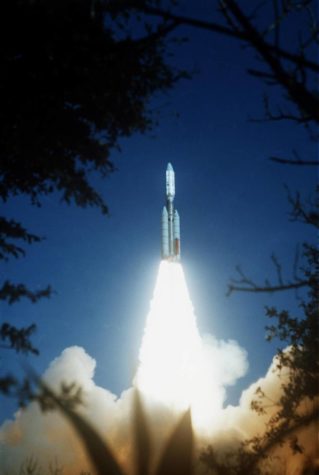Voyager 2 Enters Interstellar Space
On Dec 10, NASA announced that Voyager 2 has joined its sister, Voyager 1 in interstellar space, continuing it’s 41-year mission
Voyager 2 is now the second spacecraft ever to enter interstellar space after Voyager 1, which entered interstellar space in 2012. In order to enter interstellar space, the spacecraft had to exit the heliosphere, which is a protective bubble that the sun creates. The heliosphere is made up of particles and magnetic fields.
According to Nasa’s Jet Propulsion Laboratory, Voyager 1 is currently 13,478,087,336 miles away from Earth (as of Dec 13, 2018). Voyager 2 is currently 11,158,914,339 miles away from Earth (as of Dec 13, 2018). For Voyager 1, the round trip light time between Nasa’s Deep Space Network and the spacecraft is 1.67 days. Round trip light time is the time it takes to send an electromagnetic signal to a spacecraft like Voyager 1 and the response back to earth from the spacecraft.
On Nov. 5, Voyager 2’s onboard Plasma Science Experiment (PLS) noticed a dramatic decline in the speed of solar wind particles, which prompted scientists at Nasa’s Jet Propulsion Laboratory in Pasadena, California to conclude that Voyager 2 was nearly in interstellar space. After Nov. 5, there was no solar wind flow observed by the spacecraft. Voyager 2 had left the heliosphere on Nov 5. Then, Nasa officially announced that Voyager 2 entered interstellar space
Also, three other instruments aboard Voyager 2 including the cosmic ray subsystem, the magnetometer, and the low energy charged particle instrument all corroborated with the data from the PLS that Voyager 2 had indeed crossed into interstellar space.
“”I think we’re all happy and relieved that the Voyager probes have both operated long enough to make it past this milestone,” said Suzanne Dodd, Voyager project manager at NASA’s Jet Propulsion Laboratory (JPL) in Pasadena, California,” in a press release from Nasa’s Jet Propulsion Laboratory.
Voyager 2 launched aboard a Titan IIIE on Aug. 20, 1977 from Launch Complex-41 at Cape Canaveral Air Force Station, Florida. Voyager 2 launched 16 days before Voyager 1 which is nearly identical to Voyager 2. Voyager 2 was set on a longer trajectory which enabled the spacecraft to go on the “grand tour” of the solar system. According to JPL, the Grand Tour took advantage of a “once-in-176-years alignment,” of Jupiter, Saturn, Neptune, and Uranus.

The primary mission for both Voyagers was to visit Jupiter and Saturn. During the primary mission, the Voyagers viewed volcanoes on Io (Jupiter’s moon) and the rings of Saturn. The closest approach to Jupiter occurred on July 9, 1979 and then Saturn on Aug. 26, 1981. In light of these discoveries, the mission was extended. Voyager 2 then sailed on to Uranus and Neptune and is still the only spacecraft to visit these two planets. Voyager 2’s closest approach to Uranus occurred on Jan. 24, 1986 and then Neptune on Aug. 25, 1989.
Next, Voyager 2 along with its sister, Voyager 1 began the Voyager Interstellar Mission. Even though Voyager 1 launched after Voyager 2, it only visited Jupiter and Saturn, and it is moving in a faster velocity than Voyager 2. Before deactivating its cameras to conserve power for its three Radioisotope Thermoelectric Generators (RTGs)s, it took a portrait of the planets in the solar system on Feb. 14, 1990. The “family portrait” was actually a mosaic of multiple photographs. One of those individual photographs included the “Pale Blue Dot” image of the Earth which was six billion kilometers away from Voyager 1 at the time.

Both Voyagers also have a golden phonograph record with sounds and other information displaying human culture. The records also have different genres of music on them.
Both Voyager’s are powered by three RTGs. According to JPL, the generators currently produce approximately 249 watts. Around 2025 the RTGs will not be able to generate any power for the spacecraft and the spacecraft will be dead. However, even after both Voyagers are dead, they will continue to travel in interstellar space for eternity.


